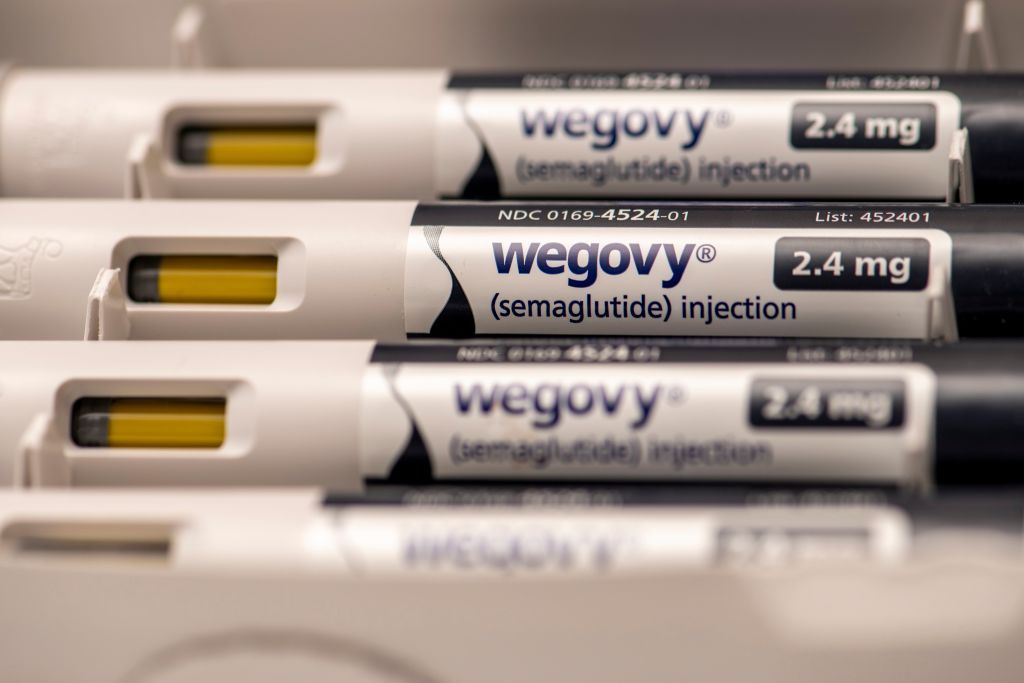The arrival of highly effective weight-loss medications like Ozempic, Wegovy, and Mounjaro has been heralded as a turning point in the fight against obesity, a chronic disease affecting millions of Americans. These GLP-1 receptor agonists have demonstrated remarkable results, offering a tangible pathway to improved health and well-being. Yet, this medical advancement is increasingly overshadowed by a stark reality: the soaring cost of these drugs is placing them out of reach for many who could benefit most, exacerbating existing health disparities and raising fundamental questions about healthcare access and affordability in the United States.
This in-depth report examines the multifaceted reasons behind the escalating price of these transformative medications, explores the ripple effects on patients and the healthcare system, and delves into potential solutions to this growing crisis.
1. The Anatomy of the Price Hike: Beyond Supply and Demand
While the basic economic principles of supply and demand certainly play a role, the high cost of weight-loss drugs in the US is a product of a more intricate web of factors:
- The Complexities of Pharmaceutical Pricing: Unlike many other developed nations, the United States allows pharmaceutical companies significant leeway in setting drug prices. This system, while intended to incentivize innovation, often results in significantly higher costs for American consumers compared to their counterparts in other countries. Patent protection grants manufacturers exclusivity for a set period, allowing them to command premium prices without direct competition. Furthermore, the negotiation process between pharmaceutical companies, insurance providers, and Pharmacy Benefit Managers (PBMs) is often opaque and can contribute to inflated costs.
- The Power of Brand and Perceived Value: The immense media attention and the compelling clinical trial data surrounding drugs like Wegovy and Mounjaro have created a strong brand identity and a perception of high value. This allows manufacturers to justify premium pricing, particularly when demand is high and effective alternatives are limited.
- The Role of Manufacturing and Distribution: While supply chain pressures can contribute to temporary price fluctuations, the fundamental cost of manufacturing these complex biologic drugs is inherently high. This involves specialized facilities, raw materials, and stringent quality control measures, all of which factor into the final price.
2. A Nation Divided by Access: Who Can Afford to Slim Down?
The widespread adoption of these medications has brought to light critical issues of access and equity:
- The Diabetes vs. Weight Loss Dilemma: A Question of Prioritization: The initial approval of drugs like Ozempic for type 2 diabetes, followed by their subsequent popularity for weight loss, has created a situation where demand from non-diabetic individuals seeking weight management can potentially impact the availability for those with a critical need for blood sugar control. This raises ethical questions about resource allocation and the prioritization of different medical needs.
- The Siren Song of Social Media and the Quest for a Quick Fix: The viral nature of weight-loss journeys shared on platforms like TikTok, often featuring dramatic transformations attributed to these medications, can create unrealistic expectations and drive demand from individuals who might not meet the clinical criteria for their use. This “quick fix” narrative can overshadow the importance of sustainable lifestyle changes and contribute to the pressure on the healthcare system.
- The Widening Gap in Health Equity: The exorbitant cost of these medications creates a stark divide, where individuals with robust insurance coverage or higher disposable incomes can access these potentially life-changing treatments, while those with less comprehensive coverage or lower incomes are effectively excluded. This exacerbates existing health disparities and reinforces the link between socioeconomic status and health outcomes.

3. The Crushing Cost Burden: Real Lives, Real Choices
The financial implications for patients are often severe:
- The Four-Figure Monthly Bill: A Budget-Breaking Expense: For individuals paying out-of-pocket, a monthly cost ranging from $900 to $1500 or more represents a significant portion of their income, forcing difficult choices between healthcare and other essential needs like housing, food, and transportation.
- The Insurance Maze: Navigating Denials and Restrictions: Even with insurance, coverage for weight-loss medications is far from guaranteed. Many insurance companies still classify obesity treatment as “lifestyle” or “cosmetic,” leading to denials or the imposition of stringent criteria that are difficult to meet. Patients often face lengthy appeals processes with uncertain outcomes.
- Beyond the Price Tag: The Emotional and Mental Toll: The inability to access potentially beneficial medications due to cost can lead to significant emotional distress, anxiety, and feelings of hopelessness. The constant struggle to manage weight, coupled with the knowledge that an effective treatment exists but is unaffordable, can take a heavy toll on mental health.
4. Seeking Alternatives and Systemic Solutions
Addressing this affordability crisis requires a multi-pronged approach:
- The Foundation of Lifestyle Change: A Necessary but Not Always Sufficient Solution: Doctors consistently emphasize the importance of diet and exercise as the cornerstone of weight management. However, for individuals with significant obesity or underlying metabolic conditions, these lifestyle modifications alone may not be sufficient to achieve clinically significant weight loss.
- The Murky World of Non-Prescription Supplements: Proceed with Caution: While the allure of cheaper, over-the-counter weight-loss supplements is understandable, their efficacy is often questionable, and they may carry potential health risks due to a lack of regulation and scientific evidence. Consumers should exercise extreme caution and consult their doctor before using these products.
- The Policy Imperative: Reforming the System for Greater Access: Meaningful change will likely require policy interventions aimed at improving affordability and access. This could include measures such as requiring insurance companies to cover medically necessary weight-loss treatments, negotiating drug prices at a national level, and incentivizing the development and availability of generic versions of these medications once patents expire. The AP News article highlights the ongoing debate and varying approaches among different states regarding Medicaid coverage for these drugs, illustrating the complex policy landscape.

5. Charting the Future: Trends and Actionable Steps
The future of weight-loss treatment is likely to see continued innovation and the development of new medications. However, ensuring equitable access will remain a critical challenge.
For American readers grappling with the cost of weight-loss drugs, here are some more in-depth and actionable steps:
- Engage in Detailed Discussions with Your Healthcare Provider: Beyond simply asking about medications, discuss the full spectrum of weight management options, including intensive lifestyle interventions, behavioral therapy, and potential enrollment in clinical trials for newer, potentially more affordable treatments.
- Thoroughly Investigate Your Insurance Coverage: Don’t just accept an initial denial. Understand the specific reasons for denial and explore the appeals process. Inquire about step therapy requirements (trying less expensive options first) and whether there are any specific criteria you might meet.
- Explore All Available Financial Assistance Programs: Beyond the manufacturer’s patient assistance programs, investigate non-profit organizations or foundations that may offer financial aid for prescription medications. Check for state-specific programs that might provide assistance.
- Consider the Potential of Telehealth and Online Pharmacies: Some online platforms may offer more competitive pricing or facilitate access to patient assistance programs. However, ensure these services are reputable and licensed.
- Become an Advocate for Change: Contact your elected officials at both the state and federal levels to express your support for policies that would improve drug affordability and access. Share your personal stories to highlight the real-world impact of these high costs.
- Stay Informed About Legislative Developments: Keep abreast of any legislative efforts aimed at lowering drug prices or expanding insurance coverage for weight-loss treatments. Engage in public discourse and support organizations working towards these goals.

The escalating cost of weight-loss drugs in the United States is not just a healthcare issue; it’s a societal challenge that reflects broader systemic issues of healthcare access and affordability. Addressing this crisis will require a concerted effort from patients, healthcare providers, policymakers, and the pharmaceutical industry to ensure that these potentially transformative medications are accessible to all who need them, rather than becoming a luxury available only to the privileged few.
References:
https://apnews.com/article/ozempic-wegovy-medicaid-weight-loss-glp1-dd34e5d76b660550dad73dc3069083ce
Disclaimer:
The content provided in this article is for informational and general wellness purposes only. It is not intended to be a substitute for professional medical advice, diagnosis, or treatment. Always consult with a qualified healthcare provider before making any changes to your health routine or lifestyle, especially if you have existing health conditions. We make no guarantees regarding the effectiveness or safety of any tips or suggestions mentioned. Use your discretion and consult professionals when necessary.
We’re here to inspire healthy habits—not replace your doctor. Stay safe and smart!



